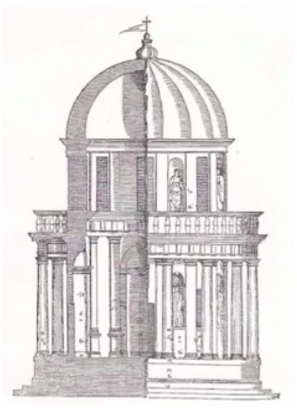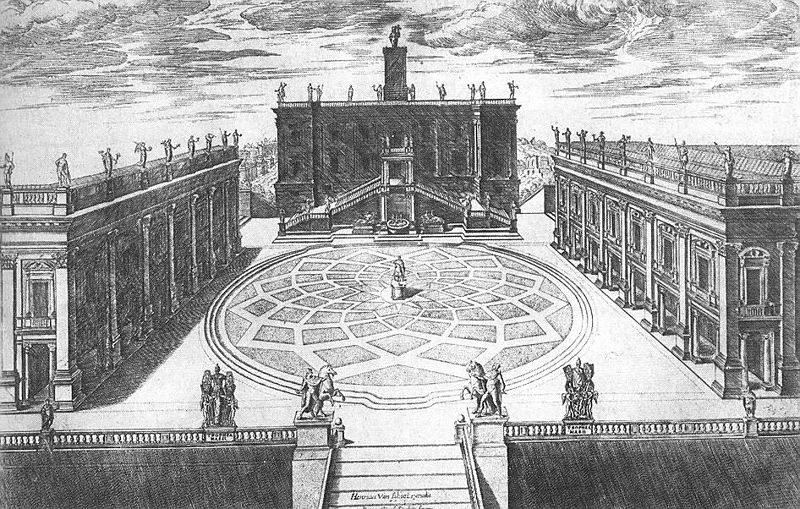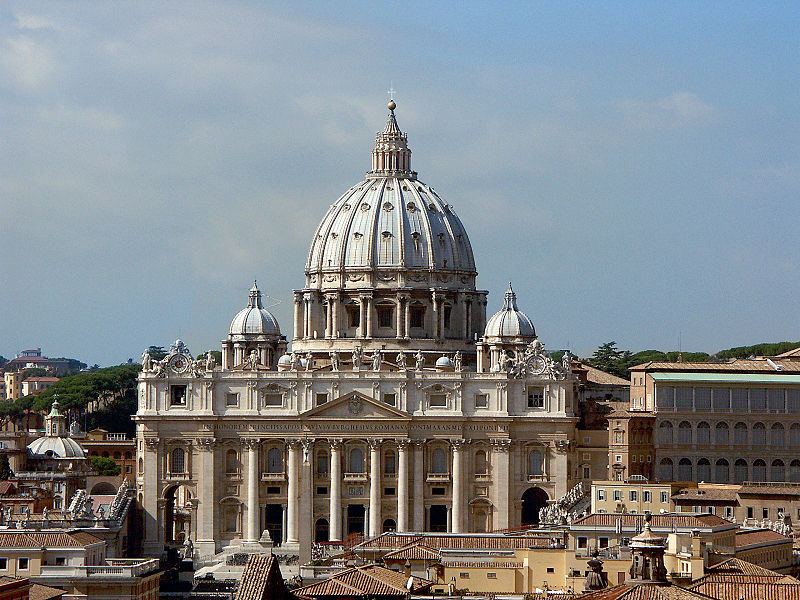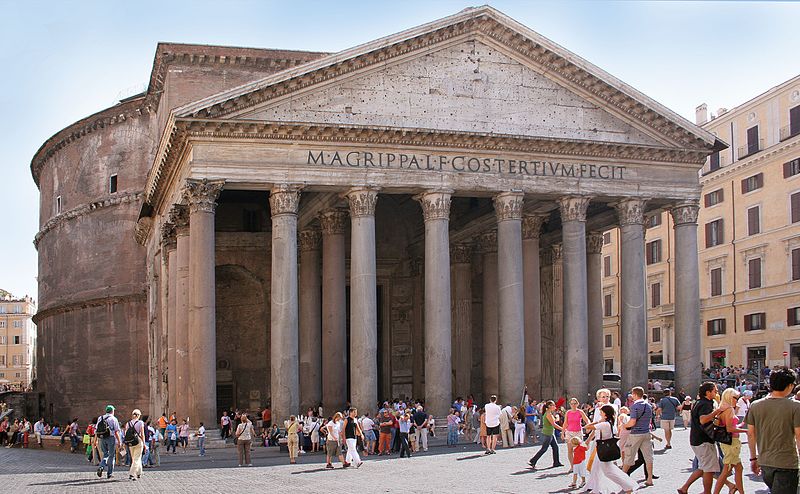Table of Contents |
This lesson focuses on the architecture of the 16th century in the cities of Rome and Vicenza in Italy.
Below is a timeline of the period covered by this lesson. Note that the excursion of Columbus in 1492 is also highlighted as a reference point.

The architect and artist Donato Bramante was a very well-known and respected artist of his time. He is one of the preeminent architects of the Renaissance, contributing such notable designs as his work on St. Peter’s Basilica and the Tempietto, or Little Temple, in the courtyard of San Pietro in Montorio in Rome.
EXAMPLE
Below is an image of the Tempietto.
1502
Stone, Marble
Rome, Italy
The Tempietto marks the supposed location of St. Peter’s martyrdom. As the name suggests, it’s a small building, almost functioning more as an example of sculpture than architecture. It’s inspired by the design of smaller, circular Greek shrines and round Roman temples. This piece of architecture incorporates the elements seen in larger monumental structures of the time. However, this is done in a condensed version that still manages to be fresh and original.
Although classically inspired, the execution is stylistically Renaissance. This is evident in the combination of well-proportioned architectural elements that wouldn’t have been seen in antiquity, such as the drum and balustrade combination.
EXAMPLE
Here is a closeup of the colonnade:
Bramante’s talent landed him the opportunity to design the replacement for the older basilica-style church of St. Peter’s in Rome.
EXAMPLE
Below is an image of these plans.
1505-1506 (Bramante); c. 1546 (Michelangelo)
Bramante’s original design was for a central plan church, like a Greek cross, with a hemispherical dome. Upon Bramante’s death, the architectural responsibilities were passed to Michelangelo.
Michelangelo had firmly established his reputation as a master architect earlier, completely redesigning the Piazza Del Campidoglio, also known as Capitoline Hill, beginning in 1536.
EXAMPLE
His design is shown here:
1568
Rome, Italy
Michelangelo reworked the piazza to face toward St. Peter’s rather than the previous direction facing the ruins of the Roman forum.

1506
Rome, Italy
Michelangelo was so impressed with Bramante’s work that he decided to expand upon Bramante’s original designs for St. Peter’s. Michelangelo maintained the central plan style with some adjustments. Most notably, he changed the overall design of the dome from hemispherical to ogival, like the magnificent dome of the Florence Cathedral.
In the Venetian Republic, near Vicenza, the artist Andrea Palladio was busy building a major career as an artist that would eventually spread his influence outside of Italy to areas as far away as England and the United States. He was well-known for his work on villas.
EXAMPLE
His most famous villa, “La Rotonda,” stands as one of his most influential designs.
1567 (construction began)
Vicenza, Italy
It was built on a hilltop with a central plan design that featured four porches inspired by Roman temple porticos, such as that of the Pantheon. Each had a different view of the surrounding countryside.

Palladio’s dome, for example, complements the overall design rather than dominating it, and is topped with a heavy lantern, a la Florence Cathedral and St. Peter’s Basilica, versus the open oculus of the Pantheon. The design is considered one of the finest examples of Renaissance architecture, and inspired countless designs that followed, including Thomas Jefferson’s plantation at Monticello in Virginia.
Source: THIS WORK IS ADAPTED FROM SOPHIA AUTHOR IAN MCCONNELL.